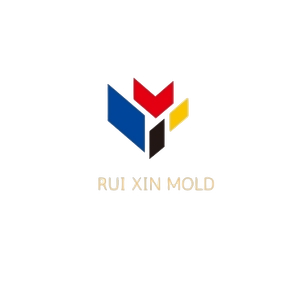
## Table of Contents
– [Introduction]
– [Key Innovations in Injection Molding]
– [Smart Manufacturing and IoT Integration]
– [Advanced Materials and Bioplastics]
– [3D Printing and Hybrid Molding]
– [Industry Trends Shaping the Future]
– [Sustainability and Circular Economy]
– [Automation and Robotics]
– [Customization and On-Demand Production]
– [FAQs]
## Introduction
Injection molding has long been a cornerstone of manufacturing, enabling the mass production of complex plastic parts with precision and efficiency. As industries evolve, so does the technology behind injection molding. **The future of injection molding is being shaped by groundbreaking innovations and transformative industry trends**, from smart manufacturing to sustainable practices.
This article explores the latest advancements and trends that are redefining the injection molding landscape, offering insights into how businesses can stay ahead in this dynamic field.
—
## Key Innovations in Injection Molding
### Smart Manufacturing and IoT Integration
The integration of **Internet of Things (IoT)** technologies into injection molding processes is revolutionizing the industry. Smart sensors and connected devices enable real-time monitoring of machine performance, material usage, and product quality.
> “IoT-driven injection molding systems can predict maintenance needs, reduce downtime, and optimize production efficiency,” says a report by [Manufacturing.gov](https://www.manufacturing.gov).
This shift towards **smart manufacturing** not only enhances productivity but also reduces operational costs, making it a game-changer for the industry.
### Advanced Materials and Bioplastics
The demand for **eco-friendly materials** is driving innovation in injection molding. Bioplastics, such as PLA and PHA, are gaining traction due to their biodegradability and reduced carbon footprint. Additionally, **advanced composites** like carbon fiber-reinforced polymers are being used to create lightweight yet durable components.
These materials are particularly valuable in industries like automotive and aerospace, where performance and sustainability are paramount.
### 3D Printing and Hybrid Molding
The convergence of **3D printing** and injection molding is opening new possibilities for manufacturers. Hybrid molding combines the precision of traditional injection molding with the flexibility of additive manufacturing, allowing for the creation of highly complex geometries.
This innovation is particularly useful for prototyping and low-volume production, enabling faster time-to-market and reduced material waste.

## Industry Trends Shaping the Future
### Sustainability and Circular Economy
Sustainability is no longer a buzzword—it’s a necessity. The injection molding industry is embracing the **circular economy** model, focusing on recycling and reusing materials. Companies are investing in closed-loop systems that minimize waste and maximize resource efficiency.
For example, [PlasticsToday](https://www.plasticstoday.com) highlights how **recycled plastics** are being integrated into new production cycles, reducing reliance on virgin materials.
### Automation and Robotics
Automation is transforming injection molding facilities. **Robotic systems** are now handling tasks like part removal, quality inspection, and even assembly. This not only improves precision but also reduces labor costs and enhances workplace safety.
> “Automation is key to maintaining competitiveness in a global market,” notes a study by [IndustryWeek](https://www.industryweek.com).
### Customization and On-Demand Production
Consumer demand for personalized products is driving the shift towards **on-demand production**. Injection molding is adapting to this trend by leveraging modular tooling and flexible manufacturing systems.
This approach allows manufacturers to produce small batches of customized products without compromising efficiency or cost-effectiveness.

## FAQs
### What is the role of IoT in injection molding?
IoT enables real-time monitoring and optimization of injection molding processes, improving efficiency and reducing downtime.
### How are bioplastics impacting the industry?
Bioplastics offer a sustainable alternative to traditional plastics, reducing environmental impact and meeting consumer demand for eco-friendly products.
### Can 3D printing replace injection molding?
While 3D printing is ideal for prototyping and low-volume production, injection molding remains the preferred method for mass production due to its speed and cost-effectiveness.
—
## Conclusion
The future of injection molding is bright, driven by **innovations in smart manufacturing, advanced materials, and hybrid technologies**. As the industry embraces sustainability, automation, and customization, businesses must adapt to stay competitive.
By staying informed about these trends and leveraging the latest technologies, manufacturers can unlock new opportunities and drive growth in the evolving landscape of injection molding.
—
## Tags
#Injection Molding, #Smart Manufacturing, #Bioplastics, #3D Printing, #Sustainability, #Automation, #Industry Trends
business CNC Energy Parts cnc fixture cnc machine cnc machining cnc machinist basic knowledge connect rib custommanufacturing draft angle injection mold injection molding Injection Molds Laser Cutting lifter Microelectronics mold base mold design mold injection for smart glasses Mold lift mold lifters mold making On-Demand Manufacturing pickleball pickleball paddle Plastic Parts PRECISIONENGINEERING Precision Gears precisionmachining precisionmanufacturing PRECISION MOLD Rapid Prototyping Reverse Engineering rust prevention Sheet Metal Fabrication sheetmetalfabrication Sheet Molding Compound slider Sliding wear plate smart glassess SMC Turret Punch Water-Based Dielectric Waterjet cutting wear block wire EDM
